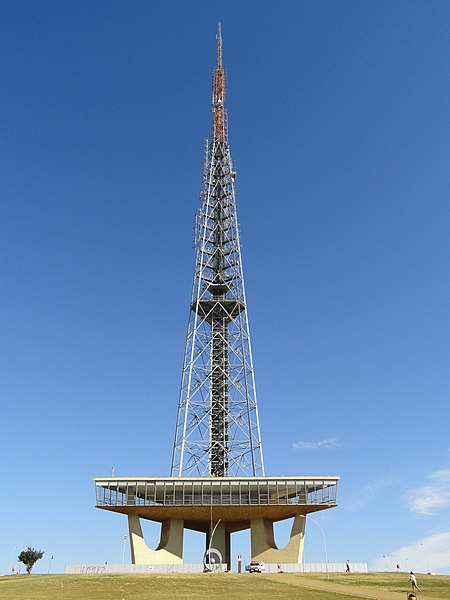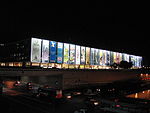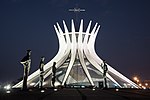Brasília TV Tower

The Brasília TV Tower is a radio and television transmission tower built in Brasilia and inaugurated in 1967 with 224 meters high. It is located at the Monumental Axis, in the Burle Marx Garden, and besides the tower itself, which has a belvedere and a museum, the Museum of Gems, its immediate surroundings have several attractions, such as the Fair Tower and the TV Tower Fountain, which makes the place one of the most visited by tourists, receiving from ten to twelve thousand people a week. The tower originally had a height of 218 metres. The tower added another six metres after additions by the TV channel Bandeirantes. First it was 212 then it added for the current height of 224 metres. The tower is the fourth tallest structure in Brazil and is also one of the most noticeable from Juscelino Kubitschek Bridge. It is located on Brasilia's Monumental Axis.
Excerpt from the Wikipedia article Brasília TV Tower (License: CC BY-SA 3.0, Authors, Images).Brasília TV Tower
Bloco O - Calaça, Brasília Setor de Administração Municipal
Geographical coordinates (GPS) Address External links Nearby Places Show on map
Geographical coordinates (GPS)
| Latitude | Longitude |
|---|---|
| N -15.790499 ° | E -47.892977 ° |
Address
Torre de TV
Bloco O - Calaça
70316-000 Brasília, Setor de Administração Municipal
Federal District, Brazil
Open on Google Maps








